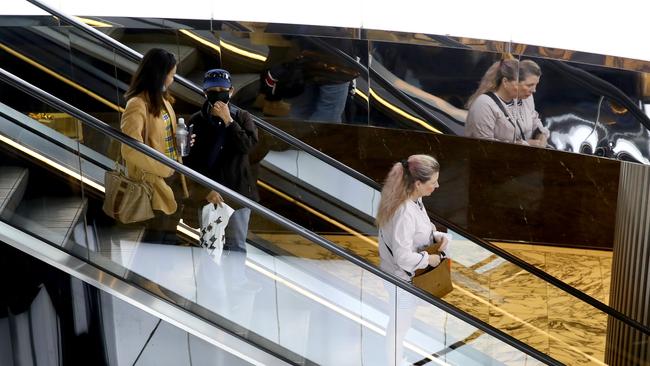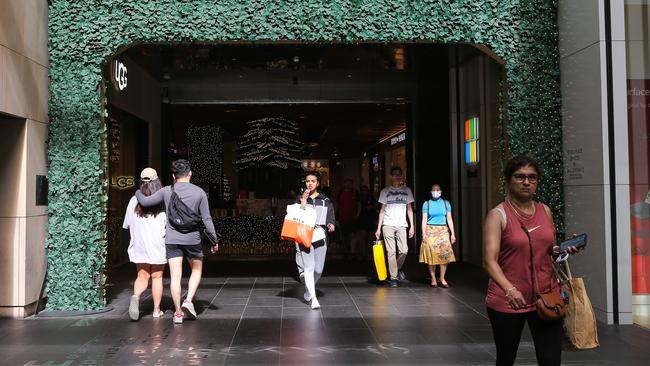
As global and local investors sniff early signs of inflation danger, the traditional institutional protection strategy - buy property or other assets with inflation protection - is taking on a different twist.
In countries like Australia, although some superannuation funds like Cbus have ventured into apartment development, residential real estate investment tends to be dominated by individuals. Institutions traditionally have been big buyers of commercial property, led by major office buildings and shopping centres.
But this time around both these property sectors are under a cloud and have a higher risk profiles than in previous years.
The growth of online shopping during the pandemic and especially in 2021 has exceeded expectations and has the appearance of a major long term consumer pattern change which will impact the performance of not just strip shopping centres but major malls. Some will continue to perform well but there is now much bigger risk in the sector.
Similarly, no one is sure just how office work patterns are going to develop in a post-pandemic world. Many will want to continue working from home and the likely exclusion of the non-vaccinated from offices will further add to the uncertainly in work patterns.
It is unlikely the mad “nine to five” rush to central business districts will be repeated in the years ahead so, like retail, office blocks carry risks that are higher than previous years. And in smaller shopping and office centres (including strip areas) banks are very reluctant to lend to buyers, which is set to impact values.

These two trends have tended to concentrate “low risk” property buying to areas led by medical-related and industrial properties. Yields on these properties, particularly if they have a degree of inflation protection, are falling in Australia and around the world.
As usually happens, the share market displays a whiff of the intense activity taking place in property auction rooms and commercial dealing.
We recently saw the listing of the HealthCo medical and health care property trust, where the directors valued the portfolio of aged care, childminding, hospital and similar assets at what independent valuers believed were market values. Those values gave the stock an asset backing of $1.86 and the public issue was struck at $2 - a small premium. But share buyers believed the actual property market had risen above the issue document values and the stock traded as high as $2.39 before settling recently at $2.30 - some 23 per cent above stated asset backing.
And it was not a simple trust listing because the promoters and managers, developers Home Consortium, are planning an unlisted trust to buy similar assets to the listed trust.
We saw the Singapore state-owned enterprise GIC with its minority Canadian partner Northwest come to Australia and use highly controversial techniques to try to convince Australian Unity Healthcare fund holders to sell their hospital, aged care and other assets cheaply.
Australians were smarter than the Singaporeans thought and it didn’t work. The Canadians are linked to NZ-based health asset company Vital, which is also selling above asset backing.
Similar trends are being reflected in industrial properties, with Dexus-backed APN Industria trading about 15 per cent above asset values.
In both the medical-related and industrial areas developers can see ballooning demand and opportunities. In the case of the hospital, aged care and medical area the ageing of the population is boosting demand. Online shopping is switching investment from shopping centres to vast warehouses and distribution centres.
Both these sectors tend to have long-term tenants and in many cases, but certainly not all, rent rates are related to CPI. That can be an important feature because if there is an inflation breakout then interest rates will rise and the current margins between the bond rate and the yields will be put under pressure. If income is linked to inflation then there is protection along with the normal bricks and mortar inflation hedge.
Very similar forces are driving the institutions into major infrastructure investment. We recently saw the industry superannuation funds bidding for Sydney Airport. It was a classic infrastructure play at a time when airports are very depressed but it carries the risk that the recovery will see air travel resume its previous growth path.

The scarcity of excellent infrastructure investments in Australia has seen the local capital move abroad so our new infrastructure projects will need to offer returns that are comparable with overseas rates.
The US under President Biden is planning massive infrastructure projects and Australians are looking to be part of the action. Toll road operator Transurban and its institutional partners are not only bidding for Sydney’s WestConnex stake that is being sold by the NSW government but are also deep into US infrastructure projects.
As more healthcare, industrial and infrastructure projects come on to the market returns may increase which will clamp values. At the moment the institutional world is awash with cash.
Accordingly excellent properties in the health care sector now selling around 3 per cent above the 10-year bond rate. Of course to achieve that rating they need top grade tenants and inflation adjusted returns.
Internationally sometimes returns are falling below the 3 per cent over the bond rate level.
Of course lesser quality health care projects and those with a more speculative outlook carry higher return rates but the concentration of cashed-up institutions to these sort of assets is lowering yields.
With central banks now considering lowering their bond purchases in a pandemic recovered world, institutions are seeing gilt-edged properties as an alternative for part of their bond exposure and an inflationary hedge.



